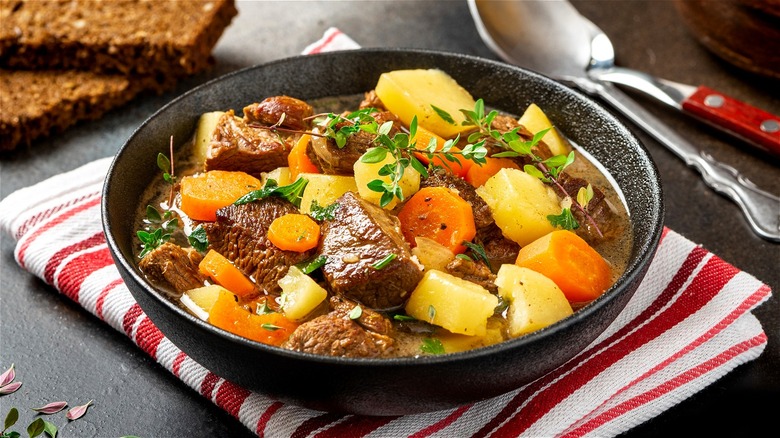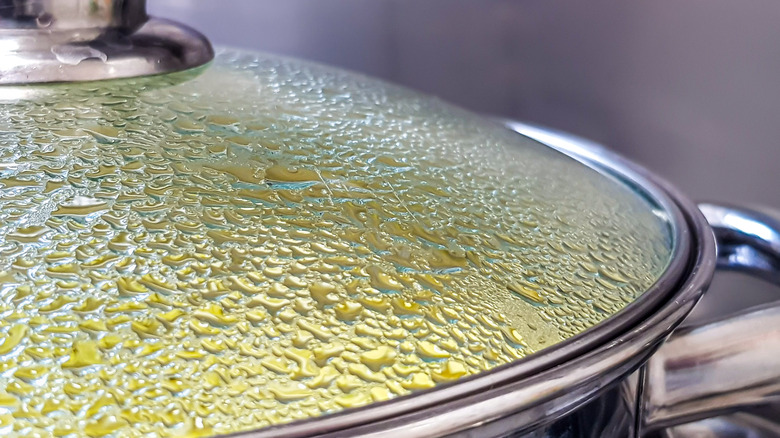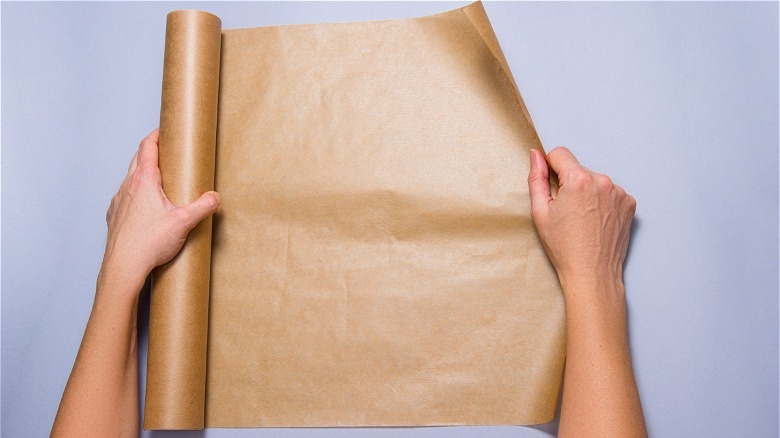The Simple Hack That Will Upgrade Your Next Stew
Whenever seasons change and cooler weather rolls in, people often turn to warm foods to align with that ever-growing chill in the air. With the emergence of fall and winter, home cooks far and wide start to embrace all their favorite cold-weather meals, including hearty beef stew and countless other soup-based recipes. According to Bake, cooler temperatures signify a change in food preferences for most people, with the glorified soup season taking over households.
Most people can agree on the comfort of a filling bowl of soup or stew, and science has an explanation for that. Psychology Today points out that various studies link the feel-good attributes of eating soup to positive feelings regarding interpersonal relationships. In fact, one 2008 study proves a direct cause-and-effect reaction from experiencing physical warmth to the production of psychological warmth.
Beyond the comforting attributes of stew, most soup lovers can also agree that those hard hours spent chopping and simmering pay off in leftover consumption. According to BBC Science Focus, collagen in meat-based stews continue to break down after cooking, creating a richer, more flavorful stew days after the dish is initially made. While no one can argue about the warming qualities or delicious flavors behind a good stew, when it comes to cooking, there's a large grey area regarding the most optimal method of preparation.
Should you cover stew?
Deciding if you should cover your stew during the hours spent on the stove or in the oven tends to be an anxiety-ridden decision for many at-home chefs since there is no right or wrong answer. According to The New York Times, all you need to create the quintessential beef stew is an oven and a heavy stock pot (lid included). The nutritious meal sits in the oven at a low temperature for three-to-five hours with the lid firmly atop the pot as the hot liquid tenderizes the meat.
Conversely, when addressing the concern of watery stew, Ree Drummond of "The Pioneer Woman" recommends cooking stew without a lid for an extended period of time since covering the dish traps moisture inside. Place the lid on top to finish off the process once you feel happy with the consistency of the golden broth.
When considering all the potential mistakes anyone can make when cooking stew, lid placement comes down to personal preference. Martha Stewart even weighs in on the subject, suggesting to keep the lid on if you're trying to retain the level of liquid but also trap in heat. The popular chef also advises leaving the lid off if you're trying to reduce or deepen the flavor of your stew. If you still feel confused, one easy solution offers the best of both worlds and takes the bewildering task of guessing completely off your proverbial plate.
Try a parchment paper lid
According to The Baltimore Sun, if you want to cook stew and enhance the flavor profile at the same time, place the pot's lid slightly askew; do not completely seal it. If you don't have a proper dutch oven with an attached lid or simply can't handle the pressure of deciding if your stew needs more flavor or less liquid, try a parchment paper lid.
On the Great British Chef's YouTube page, it walks you through the step-by-step process by first instructing you to cut a piece of parchment paper larger than your stew pot. After various folding instructions at varying angles, you're left with a round piece of parchment paper just wide enough for your stock pot with a quarter-size hole cut right in the center. While there may be ways to prevent parchment paper from rolling up, crumple the paper into a ball, then flatten it before laying it atop your stew to prevent the paper ends from curling.
Interestingly, a parchment lid is also known as a cartouche in the culinary world. Cooks Illustrated outlines the benefits of using a cartouche rather than a metal lid, claiming the parchment round evenly releases steam and is faster and more reliable than its heat-holding counterpart. If you're looking to remove the stress of trying to juggle heavy stockpot lids, consider trying this time-saving hack the next time you want to make a flavorful, evenly cooked stew.


